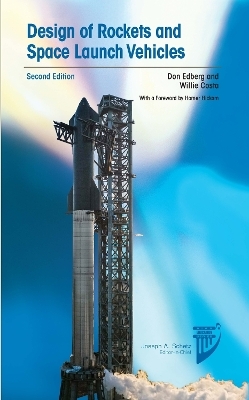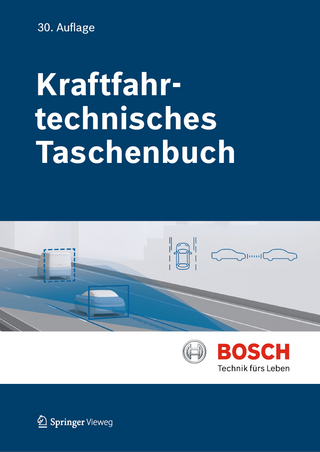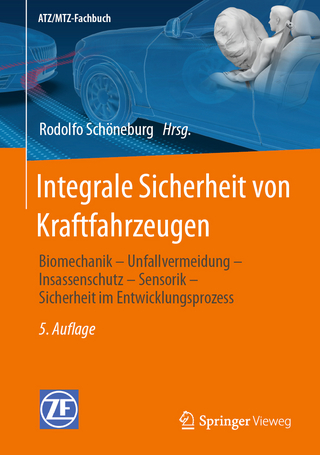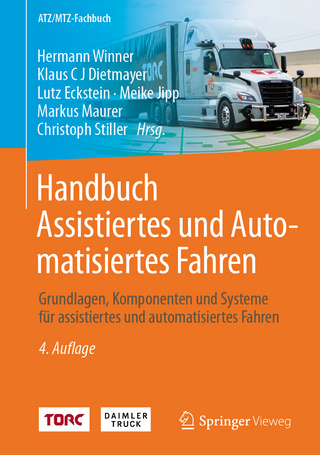
Design of Rockets and Space Launch Vehicles
American Institute of Aeronautics & Astronautics (Verlag)
978-1-62410-641-5 (ISBN)
Invaluable for amateur rocketeers, I believe it also belongs in the library of every professional rocket builder as it contains lessons that need to be often reviewed and considered during the design and construction of the prodigious new ships being prepared to cross the vast ocean we call space." —From the Foreword by Homer Hickam, Author of Rocket Boys: A Memoir (aka October Sky)
The second edition of Summerfield Book Award winner Design of Rockets and Space Launch Vehicles is a comprehensive treatment of important concepts and applications. It provides enhanced understanding and exposure to practical aspects of design, engineering, manufacturing, and testing. The subject is mature, but the applications are changing and a new generation of engineers and designers are joining the aerospace industry. It is primarily intended for readers with at least a 3rd-year level knowledge of aerospace engineering, mathematics, and physics. But because it contains many applications and step-by-step illustrated examples along with photographs or line drawings of actual hardware, it will also be of interest to practicing engineers, technical managers, and others who are interested in how rockets work in either the big picture sense, or in areas outside one's specialty. Readers of this book will understand "why things are done this way." This second edition features numerous updates throughout, including new material on:
Current launch vehicle developments including SLS, Starship-Superheavy, Electron, Neutron, LauncherOne, Astra, Alpha, Vulcan, Ariane 6 (Ch. 2)
Historical information on Proton, Zenit, Angara, Centaur, Vega, Falcon 1, Falcon 9 (Ch. 2)
Discussion of hybrid and quasi-hybrid rockets, including new combustion cycles (Ch. 4)
A complete set of equations to allow the calculation of payload mass, propellant mass, structure mass, inert mass, and liftoff mass knowing specific impulse and structural ratio (Ch. 5)
Information on carrying multiple payloads: ridesharing, piggybacking (Ch. 7)
New sections on recovery and reuse, including the physics, energy, and mass required to recover payload fairings, 1st steps, and upper steps (Ch. 14).
A table of recovery options including advantages and disadvantages and a simple cost analysis of vehicle reuse (Ch. 17).
AIAA Associate Fellow Don Edberg has been teaching aerospace vehicle design since 2001 at California State Polytechnic University, Pomona (CPP); he also holds part-time positions at USC and UCLA. CPP student design teams he has advised have placed over 20 times in AIAA student design competitions in Missile Systems, Space Transportation Systems, Spacecraft Design, and Aircraft Design. At CPP, he has received the Provost's Excellence in Teaching award, College of Engineering's Outstanding Teaching Award, and the Northrop Grumman Faculty Teaching award. He has presented short courses in launch vehicle and spacecraft design to several NASA centers, the National Transportation Safety Board, Northrop Grumman, Boeing Satellite Systems, and several smaller aerospace businesses. He was a Technical Fellow at Boeing and McDonnell Douglas, where he authored or co-authored ten US patents, and received the Silver Eagle award from McDonnell Douglas. He has also worked at Convair, AeroVironment, JPL, NASA Ames and MSFC, and the U.S. Air Force Research Lab. He received a B.A. in Applied Mechanics from the UC San Diego, and M.S. and Ph.D. degrees in Aeronautical and Astronautical Sciences from Stanford. He is an Eminent Engineer in Tau Beta Pi and was Engineer of the Year of the AIAA Orange County, CA section. Willie Costa is an aerospace engineer and Lean Six Sigma Black Belt who has worked predominantly with small aircraft, high-power rockets, and missiles. He is an alumnus of California Polytechnic University, Pomona and Penn State. He has served as a NASA Student Ambassador, Penn State STEM Fellow, and Bunton-Waller Fellow, and has been awarded the NASA Associate Administrator for Aeronautics Award for his aircraft design work. He has worked at Boeing, NAVAIR, NASA Ames Research Center, NASA Armstrong Flight Research Center, NASA Langley Research Center, and at several startups and small enterprises. He is also a pilot, logging over 300 hours in seven aircraft. He has received two graduate degrees from Penn State: a M.S. in Aerospace Engineering and a Master of Management and Organizational Leadership with a concentration in finance. He currently serves as President of Vuong Enterprises, a multinational management consulting and private equity firm.
| Erscheinungsdatum | 17.08.2022 |
|---|---|
| Verlagsort | Reston |
| Sprache | englisch |
| Gewicht | 748 g |
| Themenwelt | Technik ► Fahrzeugbau / Schiffbau |
| Technik ► Luft- / Raumfahrttechnik | |
| Technik ► Maschinenbau | |
| ISBN-10 | 1-62410-641-2 / 1624106412 |
| ISBN-13 | 978-1-62410-641-5 / 9781624106415 |
| Zustand | Neuware |
| Haben Sie eine Frage zum Produkt? |
aus dem Bereich


